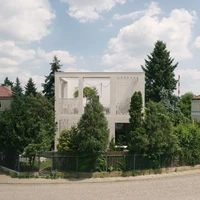No place like home
It’s not only Poland’s public building projects that are garnering praise these days – residential projects from a new generation of architects are also getting deserved attention.
September 19, 2019 | 10:00 pm CUT

Photographer: Tomasz Zakrzewski



Superhelix Pracownia Projektowa's House Behind The Roof shows that concerns around sustainability and ecology are very much at the forefront in Polish architecture. Photo: Bartłomiej Drabik



The strong sculptural form Black Rock house shows MUS Architects' attention to the landscape. Photo: Tomasz Zakrzewski



grupa Verso's Forest House is clad in vertical wooden planks, referring to the surrounding pine forest. Photo: Kacper Ziółkowski



MFRMGR Architekci's House for W shows that Poland's post war housing stock can be creatively adapted to suit today's more demanding clientele. Photos: Maciej Jeżyk
Project Gallery


















